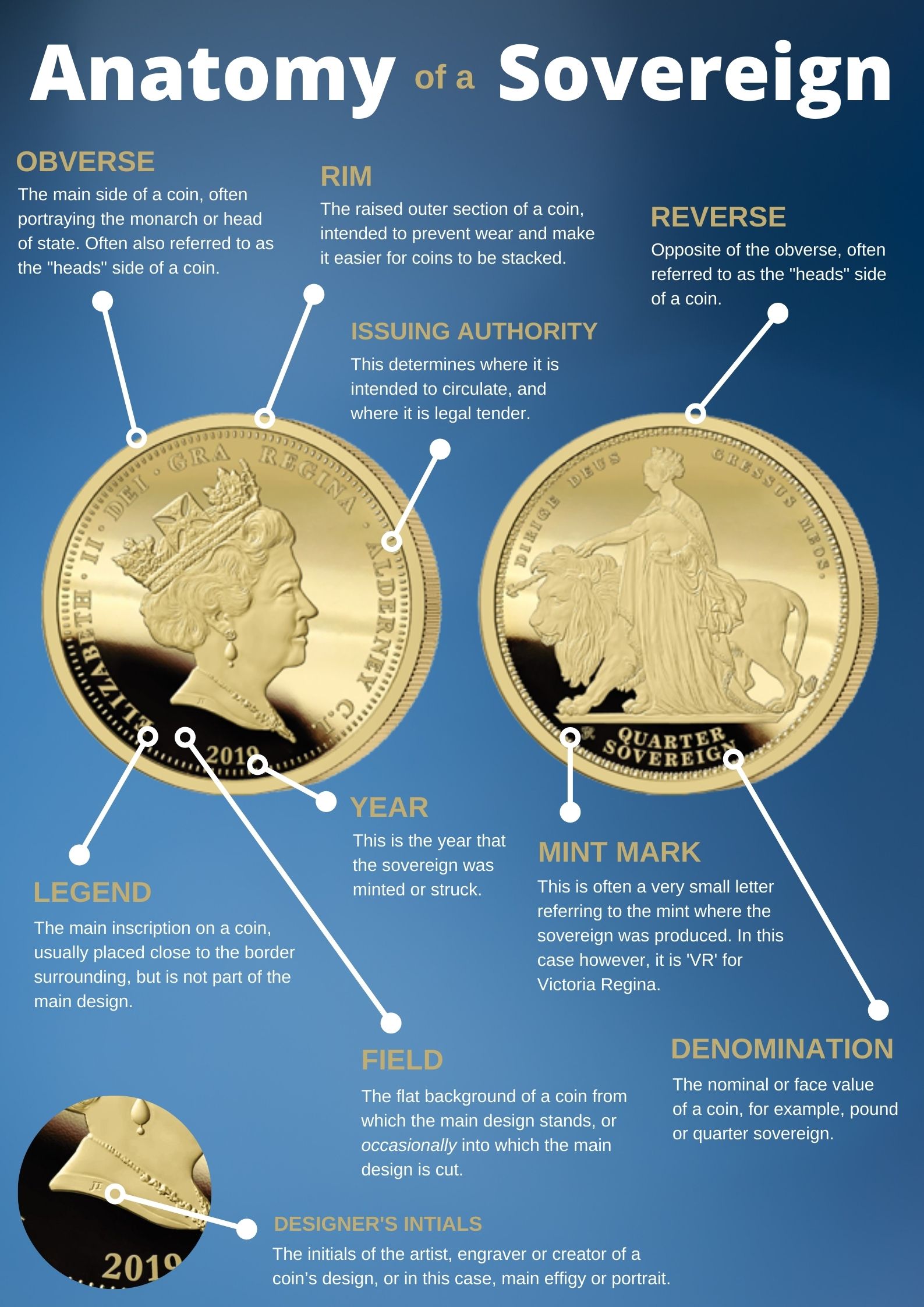
The modern sovereign is over two hundred years old, and in that time there have been many variations in design. There are certain characteristics however, that have always remained the same. Here, we take you through some numismatic terminology that makes up the anatomy of a sovereign.
Obverse
The obverse is the main side of the sovereign, often portraying the monarch or head of state. It is often also referred to as the “heads” side of a coin. Nine British Kings and Queens have appeared on the gold sovereign, since its inception in 1817.
Rim
The rim is the raised outer section of a sovereign, which is intended to prevent wear and tear to the design of the coin, and also making it easier for coins to be stacked.
This is not to be confused with the edge of the coin, which is sometimes referred to as the “third side”.
Reverse
The reverse side of the sovereign is the opposite to the obverse. It is often referred to as the “tails” side of the coin.
Designs on the reverse of sovereigns have varied over the years. Probably the most recognized design, synonymous with sovereigns, is that of St. George and the Dragon, by Italian designer Benedetto Pistrucci, which appeared on the reverse of the first modern sovereign in 1817.
Issuing Authority
The issuing authority is the country or territory whose name appears on the obverse of the coin, which has authorized and issued the coin for circulation. The sovereign will be legal tender within its issuing authority.
Year
This is the year that the sovereign was minted or struck. Certain year dates of sovereigns can be rarer than others, either because there was a low mintage run in that year, or the sovereign was never released to the public. This will lead to them being more collectable.
Mint Mark/Privy Mark
The mint mark on a sovereign denotes in which country the coin was minted. One particular example of this would be the King George V Gold Sovereign of the Bombay Mint of 1918. The letter “I” referring to the coin being minted in India can clearly be seen above the year on the reverse of the coin.
A privy mark can also state which country a sovereign was minted in, but it can also refer to a specific person, as shown on our infographic. It can also relate to a commemorative occasion.
Legend
The legend is the main inscription surrounding the border of the obverse of the coin. The legend usually consists of the monarch’s or head of state’s name, any particular titles they wish to have inscribed on the coin, usually abbreviated in Latin, along with the name of the issuing authority.
Field
The field is the flat background of the reverse of the coin onto which the main design stands. Occasionally, the design can also be cut into the field, dependent on the finish that is required.
There are different finishes to the field of a sovereign, such as frosting or reverse frosting, that can be used to really make an image stand out.
Denomination
The denomination is found on the reverse of the sovereign and it is the nominal or face value of the coin. In the case of the image in our infographic, it is a quarter sovereign.
Designer’s Initials
The initials of the artist, engraver, or creator of a coin’s design, can sometimes appear on a sovereign. As in the case of our infographic, they can be found on the main effigy or portrait, with the initials showing on the truncation of the portrait itself.
We hope you have enjoyed our little journey through the anatomy of a sovereign. Now that you know the terms and what they relate to, why not take a look through our website at the many different types of sovereigns that are available HERE?


